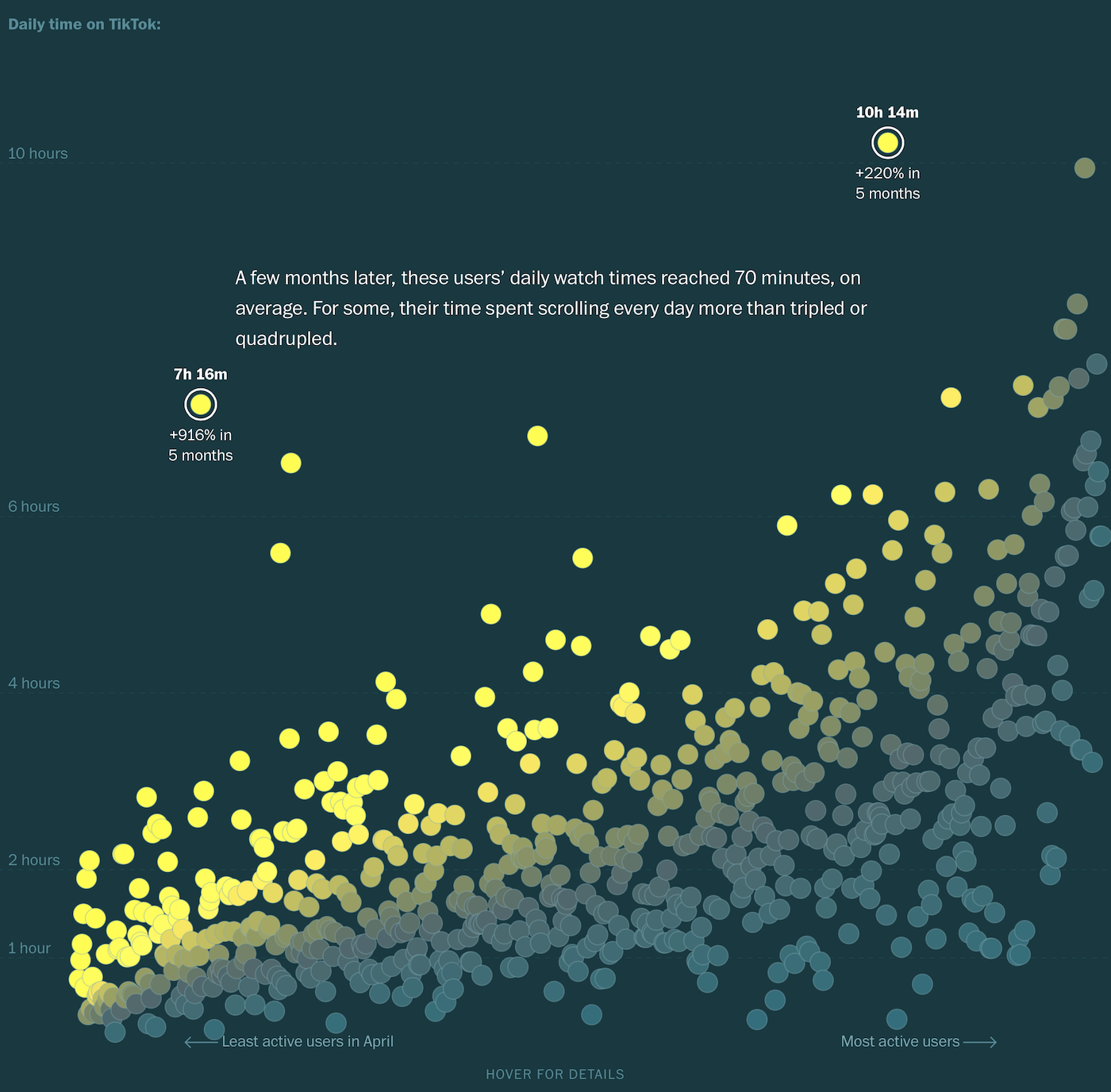
"As many of us have learned first-hand, TikTok (and its scrolling video ilk) is addictive and can pull people in to stare at their phones for hours. However, TikTok is secretive about how their viewing algorithm works. So the Washington Post recruited readers to track usage and send the data, which gave WaPo a sample of how the infinite scroll"
"kept people watching over a six-month period. New users start with general music videos and the feed grows more specific. A few minutes per day can easily increase to hours. Your brain craves the dopamine all the time. It gets harder to interact with others. You can't concentrate on bigger tasks. All in all, pretty amazing. Check out the full project, and then maybe delete TikTok."
TikTok's infinite-scroll format and opaque recommendation algorithm create addictive viewing that can extend use from minutes to hours. A six-month dataset collected from users shows the feed quickly personalizes: new users see general music videos, then the algorithm narrows content to match engagement. Small daily sessions can escalate as the brain seeks dopamine, making sustained attention on larger tasks difficult. Social interactions and face-to-face engagement can suffer as users spend more time on their phones. The combination of relentless content delivery and reward-driven reinforcement amplifies habit formation and potential harms.
Read at flowingdata.com
Unable to calculate read time
Collection
[
|
...
]